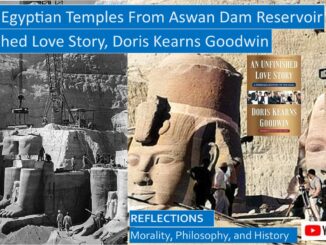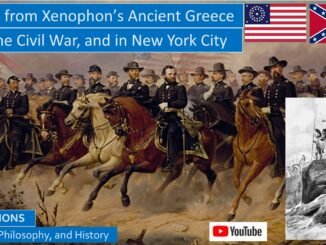
Saving Ancient Egyptian Monuments From Aswan Dam’s Rising Waters, from Unfinished Love Story, Doris Kearns Goodwin
Goodwin remembers: “From the start, the entire project was entangled in Cold War politics. Angered at the Soviet Union’s participation in the Aswan Dam project, the Eisenhower administration had refused to join a UNESCO international campaign to preserve the colossal temple complex at Abu Simbel, along with dozens of smaller temples and statues. Without American leadership, combined with private philanthropy, it seemed likely that these monuments were to be forever lost beneath the lake” formed by the rising waters behind the dam.
“In 1962, Jackie Kennedy sent an urgent memo to the president laying out the case for saving Abu Simbel: “It is the major temple of the Nile: thirteenth century BC. It would be like letting the Parthenon to be flooded.” […]

